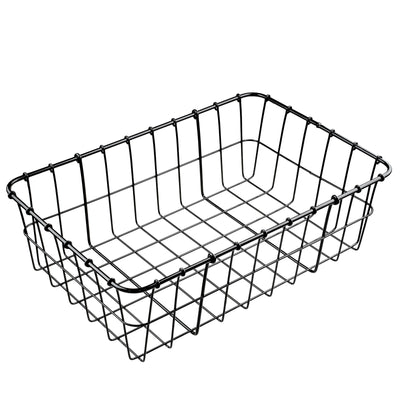Polyvalent Wrench Fest!
In this episode, we're going to build up a Polyvalent for Claire. She's going to be doing a bunch gravel races, chill tours, and day trips, and she going to need a bike that's up to snuff for all of that. So let's get into the shop and put one together!
Click here for the complete and comprehensive build list!
The first thing we agreed upon with Claire's build was to go with a 2x drivetrain over a 1x. A double cranks in 2023?! Madness!

Well, it makes a lot of sense for the types of varied terrain she'll be riding through. The East Coast bikepacking has a lot of very quick and steep climbs so having that low-low gear when climbing is really nice. And then, having the cruising gear in the flats and downhills means you aren't spinning out. The chainrings are 36/26 and the rear cassette goes from 11 to 42t.

Gravel and road drop bar drivetrains that can accommodate this gearing AND use cable brakes don't really exist anymore unfortunately. It's just a changing of the times. If you want something that will work, you'll have to go hydro, and that was something she didn't feel comfortable with. Cables and housing is easy to adjust and diagnose out in the field, but hydro fluid can be really messy and complicated, especially if you don't have the tools. She also plans to pack the bike up and do some tours overseas, so the not having to worry about kinking a hydro hose while packing/unpacking the bike is just added peace of mind. Naturally, we opted for some Growtac Post Mount Brakes for great stopping power and ease of servicing.
So! We had to go with MTB components because the shifter is separate from the brake levers so we could run a fully mechanical setup.

Crazy Bars up front for excellent control and multiple hand positions. I wrapped the bars to the curve transition so she has the room to clamp any bikepacking bags to the front of the bars.

The tires are a favorite of mine in the mid-size, low knob variety: Schwalbe Thunder Burts in 650b x 2.1". I don't know what it is about them, but they roll really nicely on smooth terrain, but hook up nicely in the dirt. Tubeless'd using Stans sealant and DT Swiss Rim Tape.

Claire maintains a cool Instagram account, so be sure to give her a follow!
Happy Riding, Claire!






Hi - I really like the build you did for Claire, and all of the component choices you picked, especially the 2X. I recently ordered a Polyvalent frame to create a commuter for the Bellingham, WA weather and mixed road conditions-it rains 13-months out of the year here. My commute is a mix of gravel and payment and I think the frame geometry is a good option, and I’m all in with 1X. I also sold my Kona Dew-Plus and an older Specialized Sirrus, because I wanted to walk away from aluminum and get back to steel. Thank you Velo Orange for giving me this option at a great price and outstanding customer service… :)
a comment on the Growtac Equal Brakes: Flat Mounts or post mounts? the assumption is bike frames are built with one or the other, never both. not true. front can be flat while rear is post. when marketing in pairs only with no option to buy just one instead of a pair is not preferable. its great to purchase an adapter for post to IS, but at the very least, provide that option, provide a source on your site if you don’t sell the mount.
I’m not sure “anymore” really applies. Shimano 10 speed road shifters (except 4700) work with 9 speed read derailleurs, but 9 speed e.g. Deore wouldn’t handle an 11-42 cassette, because it was designed for use with a triple front for wide ranges. And 26/36 was never going to be a road front derailleur.
On the other hand newer road rear derailleurs will go wider than officially rated, e.g. https://road.cc/content/feature/how-get-ultra-low-gearing-gravel-bike-adventures-246424
If you are prepared to add Shiftmate style adapters there are more options, like https://bikepacking.com/gear/guide-to-mullet-drivetrains/#V (though that page is all 1x trains).
I recently got a v.5 Polyvalent diamond frameset with a Velo Orange headset installed and the frame includes downtube shifter bosses for downtube shifters, way to go! Initially I was going to go with 26" wheels but got to talking with Scott and discovered 650b/27.5 wheels would be a better option. Most of my riding would be on paved but occasionally gravel roads and Schwalbe makes a Marathon tire for that; https://www.schwalbetires.com/Marathon-11100680
Hi Buford,
That is a good question. I’ll amend the article and include a bit of background. We originally wanted to use drop bars, but the availability of fully mechanical integrated shifter/brake levers is fairly rare nowadays, having been replaced with hydraulic brakes and/or electronic shifting OR groups that do not have the range we wanted. There are road groups that use cable brake pull, but the derailleurs are very short for example.
So! We had to go with MTB components because the shifter is separate from the brake levers so we could run a fully mechanical setup.
Hope that helps explain a bit!
-Igor
Leave a comment